Introduction
One of the most frustrating experiences for any internet user is when their Wi-Fi keeps going out. Whether you rely on Wi-Fi for work, entertainment, or simply staying connected with friends and family, a sudden loss of signal can disrupt your day. Understanding the common causes of Wi-Fi outages can help you troubleshoot and resolve the issue more effectively.
There are several factors that can contribute to Wi-Fi interruptions. In this article, we will explore the most common causes, including router issues, signal interference, network congestion, firmware or software problems, device overload, outdated hardware, and even issues with your Internet Service Provider (ISP).
By identifying the root cause and following a few simple troubleshooting steps, you can often restore your Wi-Fi connection without the need for professional assistance. Let’s dive into each of these factors and learn how to fix Wi-Fi outages to get you back online as quickly as possible.
Common Causes of Wi-Fi Outages
Wi-Fi outages can happen for a variety of reasons. Understanding these common causes can help you identify the source of the problem and take appropriate steps to fix it. Let’s explore each of these causes in more detail:
1. Router Issues: One of the most common causes of Wi-Fi outages is problems with the router itself. This could include hardware malfunctions, overheating, or outdated firmware. It’s important to regularly check your router’s settings and update its firmware to ensure optimal performance.
2. Signal Interference: Wi-Fi signals can be disrupted by various sources of interference, such as other electronic devices, walls, and even neighboring Wi-Fi networks. Cordless phones, microwaves, and Bluetooth devices are common culprits. If you notice frequent Wi-Fi disruptions, try relocating your router away from these potential sources of interference.
3. Network Congestion: When too many devices are connected to your Wi-Fi network at once, it can lead to bandwidth congestion and slower speeds. This is especially common in households with multiple users streaming videos, playing online games, or downloading large files simultaneously. Limiting the number of connected devices or using Quality of Service (QoS) settings on your router can help alleviate this issue.
4. Firmware or Software Issues: Outdated firmware or software on your router or connected devices can cause compatibility issues and lead to Wi-Fi outages. Regularly checking for updates and installing them can help prevent these problems.
5. Overloading of Devices: Overloading your router with too many connected devices can strain its capabilities and result in dropped connections. Consider disconnecting devices that are not in use or investing in a more powerful router to handle higher device loads.
6. Outdated Hardware: Older routers and devices may not be equipped with the latest Wi-Fi standards and technologies, leading to signal instability. Upgrading to newer hardware can greatly improve Wi-Fi performance and reduce outages.
7. ISP Problems: Sometimes, the issue may not be with your Wi-Fi setup but rather with your Internet Service Provider. It’s worth contacting your ISP to check for any service outages or connectivity problems in your area.
By understanding these common causes of Wi-Fi outages, you can troubleshoot and fix the issue more effectively. In the next sections, we will explore specific steps and solutions for each of these problems.
Router Issues
Your router plays a crucial role in delivering a stable Wi-Fi connection to your devices. When your Wi-Fi keeps going out, router issues could be to blame. Here are some common router problems and how to address them:
1. Hardware Malfunctions: Over time, routers can experience hardware malfunctions that cause intermittent Wi-Fi connectivity issues. Check if the router’s lights are functioning as they should. If you notice any abnormal behavior, try restarting the router by unplugging it for a few seconds and then plugging it back in. This simple step can often resolve minor hardware glitches.
2. Overheating: Routers generate heat while operating, and excessive heat can cause performance problems. Make sure your router is placed in a well-ventilated area and not covered by any objects that may obstruct airflow. If overheating persists, consider using a cooling pad or upgrading to a router with better heat dissipation capabilities.
3. Outdated Firmware: Firmware updates are important for optimal router performance and security. Outdated firmware can lead to compatibility issues and Wi-Fi outages. Access your router’s settings through a web browser and navigate to the firmware update section. Follow the manufacturer’s instructions to download and install the latest firmware version.
4. Wi-Fi Channel Interference: Routers typically operate on specific Wi-Fi channels to transmit signals. However, neighboring networks can operate on the same or overlapping channels, causing interference and degraded Wi-Fi performance. Access your router’s settings and change the Wi-Fi channel to a less congested one. Wi-Fi analyzer apps can help you identify the least crowded channel in your area.
5. Router Placement: The location of your router can significantly impact its Wi-Fi coverage. Place your router in a central location, away from walls and obstructions. Avoid placing it near other electronic devices that emit electromagnetic signals, such as cordless phones and microwave ovens.
6. Resetting to Factory Settings: If all else fails, you can try resetting your router to its factory settings. Keep in mind that this will remove any customized configurations, so it’s advisable to note down your settings beforehand. Consult your router’s user manual or the manufacturer’s website for instructions on how to perform a factory reset.
By troubleshooting these common router issues, you can often resolve Wi-Fi outages and restore a stable connection. However, if the problem persists, it may be necessary to contact your router manufacturer’s support or consider upgrading to a new router with advanced features and better performance.
Signal Interference
Signal interference can disrupt the Wi-Fi signals in your home or office, causing frequent Wi-Fi outages. Identifying and addressing the sources of interference can help improve your Wi-Fi reliability. Here are some common causes of signal interference and ways to mitigate them:
1. Other Electronic Devices: Electronic devices like cordless phones, baby monitors, and even microwave ovens can emit signals that interfere with Wi-Fi. Keep your Wi-Fi router away from these devices to minimize interference. If possible, use wired connections for devices that are in close proximity to your router.
2. Neighboring Wi-Fi Networks: If there are multiple Wi-Fi networks operating in close proximity, especially if they use the same Wi-Fi channel, it can lead to signal interference. Use a Wi-Fi analyzer app to determine the least crowded channel in your area, and configure your router to broadcast on that channel.
3. Physical Obstructions: Walls, floors, and other physical objects can impede the Wi-Fi signal from reaching all areas of your home or office. Consider repositioning your router to a more central location or using Wi-Fi range extenders to boost the signal in areas with weaker coverage.
4. Large Metal Objects: Metal objects like mirrors, refrigerators, and metal furniture can reflect or absorb Wi-Fi signals, leading to signal loss or weakening. Avoid placing your router near these objects, or use directional antennas to focus the Wi-Fi signal in the desired direction.
5. Bluetooth Devices: Bluetooth devices, such as speakers, headphones, and wireless keyboards, operate on the same 2.4GHz frequency band as Wi-Fi. They can cause interference, especially when in close proximity to your router. Consider moving the Bluetooth devices away from the router or using devices that support newer Bluetooth versions with better interference management.
6. Electrical Wiring: Electrical wiring, particularly poorly shielded or damaged wiring, can emit electromagnetic signals that interfere with Wi-Fi. Keep your router away from electrical wiring and outlets as much as possible. If you suspect faulty wiring, consult a professional electrician to investigate and fix the issue.
By addressing these signal interference sources, you can minimize disruptions in your Wi-Fi connectivity. Experiment with different placement options for your router, adjust channel settings, and ensure there are no physical or electronic obstacles obstructing the Wi-Fi signal. Remember, creating a clear and unobstructed path for the Wi-Fi signals to travel can significantly improve the stability of your wireless connection.
Network Congestion
Network congestion can occur when there are too many devices connected to your Wi-Fi network simultaneously, leading to slower speeds and occasional outages. Managing network congestion can help ensure a smoother Wi-Fi experience. Here are some effective ways to alleviate network congestion:
1. Limit the Number of Connected Devices: If you notice frequent Wi-Fi outages due to network congestion, consider limiting the number of devices connected to your network. Disconnect devices that are not in use or prioritize essential devices, such as work computers or streaming devices, to ensure they have sufficient bandwidth.
2. Quality of Service (QoS) Settings: Most modern routers offer QoS settings that allow you to prioritize specific types of internet traffic over others. This means you can assign higher priority to certain devices or types of applications (e.g., video streaming or online gaming) to ensure they receive adequate bandwidth, even during periods of network congestion.
3. Schedule Bandwidth-Intensive Tasks: If you have tasks that require significant bandwidth, such as large file downloads or streaming high-definition videos, consider scheduling them during off-peak hours. This reduces the strain on your network during times when other users might be online.
4. Upgrade Your Internet Plan: If network congestion is a persistent problem, it may be time to upgrade your internet plan to higher speeds or a plan with higher data caps. A faster internet connection can handle more simultaneous users and bandwidth-intensive activities without causing significant network congestion.
5. Separate Networks: If you have multiple Wi-Fi networks set up, such as a guest network or work network, consider separating them to reduce congestion. Each network will have its own bandwidth allocation, minimizing interference between devices connected to different networks.
6. Use Wired Connections: For devices that require a stable and uninterrupted connection, consider using wired Ethernet connections instead of relying solely on Wi-Fi. Wired connections offer faster speeds and are not susceptible to Wi-Fi interference or network congestion.
By implementing these strategies, you can effectively manage network congestion and minimize Wi-Fi outages. Adjusting the number of connected devices, utilizing QoS settings, scheduling bandwidth-intensive tasks, upgrading your internet plan, and using wired connections can all contribute to a smoother and more reliable Wi-Fi experience for all users.
Firmware or Software Issues
Firmware or software issues can significantly impact the performance and stability of your Wi-Fi connection. Outdated firmware or incompatible software can lead to various problems, including intermittent Wi-Fi outages. Here’s how you can address firmware or software issues:
1. Router Firmware Updates: Manufacturers often release firmware updates to address bugs, security vulnerabilities, and improve overall performance. Access your router’s settings through a web browser and navigate to the firmware update section. Follow the instructions provided by the manufacturer to download and install the latest firmware version compatible with your router model.
2. Device Software Updates: In addition to router firmware, it’s crucial to keep the software on your connected devices up to date. This includes your smartphones, laptops, tablets, and any other devices that connect to your Wi-Fi network. Regularly check for software updates and install them to ensure compatibility and optimal performance.
3. Router Configuration: Incorrect router settings or misconfigured options can cause Wi-Fi outages. Double-check your router’s settings, such as SSID (network name), password, security encryption, and channel selection. Make sure they are configured correctly and match the requirements of your devices.
4. Factory Reset: If you’ve made extensive changes to your router’s settings and are experiencing consistent Wi-Fi outages, a factory reset may help. This restores the router’s settings to their default state. Keep in mind that a factory reset will erase any custom configurations, so make sure to note down your settings before proceeding.
5. Software Conflicts: Incompatibilities between the software running on your connected devices and the router’s firmware can create Wi-Fi connectivity issues. Temporarily disable any third-party security software or firewall applications on your devices to see if they are causing conflicts. If the problem is resolved, contact the software vendor for assistance or consider switching to a different software solution.
6. Rebooting Devices: Sometimes, a simple reboot can resolve firmware or software-related issues. Restart your router and all connected devices, allowing them to refresh their settings and establish new connections. This can often clear any temporary software glitches that may be affecting your Wi-Fi.
Regularly updating your router’s firmware, keeping device software up to date, reviewing and adjusting router settings, performing factory resets when necessary, addressing software conflicts, and rebooting devices are effective ways to tackle firmware or software issues. By doing so, you can ensure that your Wi-Fi network functions smoothly and remains stable.
Overloading of Devices
When your Wi-Fi network becomes overloaded with devices, it can lead to slower speeds, connection drops, and overall instability. Managing the number of devices connected to your network is crucial for maintaining a reliable Wi-Fi experience. Here are some steps to address the issue of device overload:
1. Prioritize Essential Devices: Identify the devices that require a continuous and stable internet connection, such as work computers, smart home devices, or streaming devices. Make sure these devices have priority access to your Wi-Fi network, ensuring they receive sufficient bandwidth and reducing the chances of them being affected by overload issues.
2. Remove Unused Devices: Disconnect any devices that are no longer in use or are rarely used. These devices can consume valuable bandwidth even when not actively in use, potentially impacting the performance of other devices. Regularly check and remove devices that are no longer needed from your network.
3. Set Connection Limits: Some routers offer features that allow you to set connection limits or bandwidth allocation for individual devices. If your router supports such functionality, take advantage of it to control the number of devices connected simultaneously and allocate bandwidth accordingly. This can help prevent overload issues caused by too many devices vying for bandwidth.
4. Upgrade your Router: Older routers may not be able to handle a large number of devices effectively. Consider upgrading to a more powerful router that is designed to handle higher device loads. Look for routers with higher specifications, such as increased Wi-Fi range, higher data transfer rates, and advanced processing capabilities.
5. Implement Guest Networks: Creating a separate guest network can help isolate guest devices from your main network, preventing them from contributing to overload issues. Guests can connect to the guest network, which typically has limited access and bandwidth allocation. This ensures that your main network remains dedicated to essential devices.
6. Implement Wi-Fi Calling: Encourage users to switch to Wi-Fi calling on their smartphones. By utilizing Wi-Fi for voice calls, it reduces the strain on cellular networks and can free up bandwidth for other devices on your network.
By implementing these measures, you can effectively manage the number of devices connected to your Wi-Fi network and reduce the risk of overload issues. Prioritizing essential devices, removing unused devices, setting connection limits, upgrading your router, implementing guest networks, and encouraging Wi-Fi calling can help ensure a stable and reliable Wi-Fi experience for all connected devices.
Outdated Hardware
Outdated hardware can significantly impact the performance and reliability of your Wi-Fi network. If your Wi-Fi keeps going out, it may be time to consider upgrading your hardware. Here are some reasons why outdated hardware can cause Wi-Fi issues and how you can address them:
1. Limited Wi-Fi Standards: Older routers may only support outdated Wi-Fi standards, such as 802.11g or 802.11n, which offer slower speeds and less coverage compared to newer standards like 802.11ac or 802.11ax (Wi-Fi 6). Upgrading to a router that supports the latest Wi-Fi standards can provide faster speeds and better coverage throughout your home or office.
2. Lack of Antenna Technology: Antenna technology plays a crucial role in Wi-Fi signal transmission. Older routers may have outdated antenna designs and limitations, resulting in weaker signals and reduced range. Upgrading to a router with advanced antenna technology, such as MIMO (Multiple Input Multiple Output) or beamforming, can significantly improve signal strength and coverage.
3. Insufficient Processing Power: Outdated routers may lack the necessary processing power to handle the demands of modern internet usage. This can lead to slower speeds, increased latency, and dropped connections. Upgrading to a router with a more powerful processor can enhance performance and stability.
4. Limited Ethernet Ports: If you rely on wired connections for certain devices, an outdated router with a limited number of Ethernet ports can be inconvenient. Consider upgrading to a router with more Ethernet ports to accommodate your wired devices without the need for additional switches or hubs.
5. Inadequate Security Features: Older routers may lack the latest security features and encryption protocols, leaving your network vulnerable to cyber threats. Upgrading to a router with robust security features, such as WPA3 encryption and built-in firewalls, can help protect your network and devices from unauthorized access.
6. Age-Related Hardware Malfunctions: Over time, aging hardware may experience malfunctions or degrade in performance. Frequent signal drops, intermittent connectivity issues, or hardware failures are indications that your router may be reaching the end of its lifespan. In such cases, upgrading to a new router is advisable.
By upgrading your hardware to more modern and capable devices, you can enhance the performance, coverage, and security of your Wi-Fi network. Consider the specific needs of your network and devices when choosing a new router, ensuring that it offers the latest Wi-Fi standards, advanced antenna technology, sufficient processing power, an adequate number of Ethernet ports, and robust security features.
ISP Problems
While many Wi-Fi outages can be attributed to issues within your own network, it’s essential to consider the possibility of problems with your Internet Service Provider (ISP). Here are some common ISP-related issues that can cause Wi-Fi outages and how you can troubleshoot them:
1. Service Outages: ISPs may experience service disruptions due to maintenance, infrastructure issues, or unforeseen circumstances. Before assuming the problem is within your network, check if there are any reported outages in your area. Visit your ISP’s website or contact their customer support to inquire about any known issues.
2. Connection Instability: Poor connection stability can be a result of issues on your ISP’s end. Contact your ISP’s customer support and report the problem. They can run diagnostics to identify any underlying issues with the connection and guide you through potential troubleshooting steps.
3. Bandwidth Limitations: Some ISPs impose data caps or throttling limits that can affect your Wi-Fi performance. If you consistently experience slow speeds or outages after reaching a certain usage threshold, check your service plan terms to see if you are subject to any limitations. Upgrade to a plan with higher data caps or consider switching to an ISP that offers more favorable terms.
4. Weak Signal from the ISP: If you have a high-speed internet plan but consistently experience slow Wi-Fi speeds or outages, it may be due to a weak signal from your ISP. Contact their customer support to ensure that the signal strength reaching your modem or router is within acceptable limits. They may need to send a technician to investigate and address the signal issue.
5. Modem/Router Compatibility: Some ISPs provide their own modem or router equipment, which may not always be compatible with newer Wi-Fi standards or offer optimal performance. If you suspect that your modem or router is causing Wi-Fi outages, contact your ISP’s customer support to inquire about possible hardware upgrades or compatibility issues.
6. Malfunctioning Equipment: Hardware malfunctions can occur with both ISP-provided and user-owned modem/router equipment. If you experience persistent Wi-Fi outages, contact your ISP’s customer support to report the issue. They can help diagnose whether the problem lies with the equipment and guide you through appropriate troubleshooting steps or arrange for a replacement if necessary.
If you suspect that ISP-related problems are causing your Wi-Fi outages, it’s important to contact your ISP’s customer support and provide them with detailed information about the issue. They can help identify and resolve any issues on their end, ensuring a more stable connection and improved Wi-Fi performance.
How to Fix Wi-Fi Outages
Experiencing frequent Wi-Fi outages can be frustrating, but fortunately, there are several troubleshooting steps you can take to fix the issue. Here are some effective methods to restore your Wi-Fi connection:
1. Troubleshoot Router Issues: Start by troubleshooting your router. Restart the router by unplugging it from power, waiting for a few seconds, and then plugging it back in. Ensure that the router’s firmware is up to date and check for any hardware malfunctions or overheating.
2. Resolving Signal Interference: Address signal interference by moving your router away from other electronic devices that may cause interference, such as cordless phones and microwaves. Use Wi-Fi analyzer apps to find the best Wi-Fi channel, and adjust your router’s settings accordingly.
3. Managing Network Congestion: Reduce network congestion by limiting the number of connected devices, utilizing Quality of Service (QoS) settings on your router, and scheduling bandwidth-intensive tasks during off-peak hours.
4. Updating Firmware or Software: Ensure that both your router’s firmware and connected devices’ software are up to date. Regularly check for firmware updates for your router and install the latest software updates on your devices.
5. Limiting Device Overload: Disconnect unused devices from your Wi-Fi network and prioritize essential devices. Set connection limits and allocate bandwidth appropriately using your router’s settings.
6. Upgrading Hardware: Consider upgrading your router or other Wi-Fi equipment if they are outdated. Upgrading to newer hardware can improve performance, coverage, and compatibility with the latest Wi-Fi standards.
7. Contacting ISP for Assistance: If you have tried the above steps and are still experiencing Wi-Fi outages, contact your Internet Service Provider (ISP) to check for any service outages or underlying connectivity issues in your area. They can provide further guidance and support in resolving the problem.
By following these steps, you can often fix Wi-Fi outages and restore a stable connection. It’s important to diagnose the specific cause of the issue and address it accordingly. Remember that some issues may require professional assistance, particularly if they are related to ISP infrastructure or widespread connectivity problems. Patience and persistence are key when troubleshooting Wi-Fi outages, as finding the root cause and implementing the appropriate solution may take time and experimentation.
Troubleshooting Router Issues
When experiencing Wi-Fi outages, it’s important to address any potential router-related issues. Here are some troubleshooting steps to help resolve router problems:
1. Restart the Router: A simple router restart can often resolve minor glitches. Unplug the router from power, wait for about 10 seconds, and then plug it back in. Allow the router to boot up fully, and check if the Wi-Fi connection is restored.
2. Check Router Lights: Pay attention to the lights on the router. Each light indicates a different aspect of the router’s functionality. Consult the router’s manual or the manufacturer’s website to determine the meaning of each light. In case of any abnormal light behavior, refer to the manual for troubleshooting steps.
3. Update Firmware: Access your router’s settings through a web browser and navigate to the firmware update section. Check if there are any new firmware updates available for your router model. If an update is available, follow the manufacturer’s instructions to download and install the latest firmware version. Updated firmware can resolve known issues and improve the router’s performance.
4. Change Wi-Fi Channel: Log in to your router’s settings and check the Wi-Fi channel it’s currently using. If there are multiple Wi-Fi networks in your vicinity operating on the same or overlapping channels, it can cause signal interference. Change the Wi-Fi channel to a less congested one to minimize interference and improve your Wi-Fi connection.
5. Reset Router to Factory Settings: If the above steps don’t resolve the issue, you can try resetting your router to its factory settings. Keep in mind that this will erase any personalized configurations, so make sure to back up your settings if necessary. Refer to the router’s manual for instructions on how to perform a factory reset.
6. Verify Router Placement: Ensure that your router is placed in a central location within your home or office. Keep it away from obstructions such as walls, furniture, or other electronic devices that may interfere with the Wi-Fi signal. Reposition the router if necessary to improve signal coverage.
7. Contact Router Manufacturer’s Support: If you’ve exhausted all troubleshooting steps and the Wi-Fi outages persist, reach out to the manufacturer’s support for further assistance. They can provide specific troubleshooting steps tailored to your router model or offer guidance on whether your router may need repairs or replacement.
By following these troubleshooting steps, you can often resolve router-related issues that cause Wi-Fi outages. It’s important to seek professional assistance if you are unsure about performing certain actions or if the router requires repairs or replacement. Remember to implement regular maintenance, such as updating firmware and monitoring router performance, to prevent future outages.
Resolving Signal Interference
Signal interference can disrupt Wi-Fi signals and lead to poor connectivity or frequent Wi-Fi outages. Resolving signal interference is essential for maintaining a stable Wi-Fi connection. Here are some effective methods to mitigate signal interference:
1. Identify Interfering Devices: Identify devices that could potentially interfere with your Wi-Fi signal. Common culprits include cordless phones, baby monitors, microwave ovens, and Bluetooth devices. Move your Wi-Fi router away from these devices to minimize interference.
2. Choose the Right Wi-Fi Channel: Other nearby Wi-Fi networks operating on the same or overlapping channels can cause interference. Use a Wi-Fi analyzer app to identify the least congested Wi-Fi channel in your area. Access your router’s settings and switch to the recommended channel with less interference.
3. Optimize Router Placement: Position the router in a central location within your home or office to ensure maximum signal coverage. Avoid placing the router near walls or other obstacles that could obstruct the signal. The ideal placement is often at an elevated position, such as on a shelf or wall mount.
4. Adjust Antenna Positioning: If your router has adjustable antennas, try different positions to enhance signal transmission and reception. Experiment with both vertical and horizontal orientations to find the optimal antenna positioning for better signal strength and coverage.
5. Use Wireless Range Extenders: Wireless range extenders (also known as Wi-Fi extenders or boosters) can help expand your Wi-Fi coverage by amplifying the signal and extending it into areas with weaker reception. Strategically place range extenders throughout your home or office to eliminate Wi-Fi dead zones and minimize signal interference.
6. Upgrade to a Dual-Band Router: Dual-band routers operate on both 2.4GHz and 5GHz frequency bands, offering better flexibility and reduced interference. Devices that support the 5GHz band can connect to it, relieving congestion on the 2.4GHz band and mitigating interference.
7. Adjust Power Output: Some routers allow you to adjust the power output or transmission power. Lowering the transmission power can help minimize signal interference between your router and neighboring Wi-Fi networks, especially if they are in close proximity.
8. Upgrade to Wi-Fi 6 (802.11ax): If your devices support it, consider upgrading to a Wi-Fi 6 router. Wi-Fi 6 offers better interference management and improved performance in congested environments, resulting in a more stable and reliable Wi-Fi connection.
By implementing these methods, you can greatly reduce signal interference and improve the stability of your Wi-Fi connection. Experiment with different approaches to find the most effective solution for your particular environment. Remember to monitor your Wi-Fi network regularly and make adjustments as needed to ensure optimal signal strength and minimize interference.
Managing Network Congestion
Network congestion occurs when there are too many devices connected to your Wi-Fi network simultaneously, leading to slower speeds and occasional Wi-Fi outages. Effective management of network congestion can help ensure a smoother and more reliable Wi-Fi experience. Here are some methods for managing network congestion:
1. Limit the Number of Connected Devices: If you notice frequent Wi-Fi outages or slow speeds due to network congestion, consider limiting the number of devices connected to your network. Disconnect devices that are not in use or prioritize essential devices that require a continuous and stable internet connection.
2. Implement Quality of Service (QoS) Settings: Most modern routers offer QoS settings, which allow you to prioritize certain types of internet traffic over others. By assigning higher priority to specific devices or applications, such as work computers or streaming devices, you can ensure that they receive sufficient bandwidth, even during periods of network congestion.
3. Schedule Bandwidth-Intensive Tasks: If you have tasks that require significant bandwidth, such as large file downloads or streaming high-definition videos, consider scheduling them during off-peak hours. This helps reduce the strain on your network when other users may be online, providing a smoother browsing experience for everyone.
4. Upgrade to Higher Internet Speeds: If network congestion is a recurring issue, it may be worth considering upgrading your internet plan to higher speeds. Faster internet connections can handle more simultaneous users and bandwidth-intensive activities without causing significant congestion.
5. Consider Wired Connections: For devices that require a stable and uninterrupted connection, consider using wired Ethernet connections instead of relying solely on Wi-Fi. Wired connections offer faster speeds and are not susceptible to Wi-Fi interference or network congestion.
6. Separate Networks: Implement separate networks, such as a guest network or work network, to reduce congestion. Each network will have its own bandwidth allocation, preventing devices connected to one network from impacting the performance of devices connected to other networks.
7. Optimize Router Settings: Adjusting router settings can also help manage network congestion. For example, optimizing the channel width or adjusting transmit power can enhance signal quality and reduce interference, improving overall network performance.
By implementing these methods, you can effectively manage network congestion and minimize Wi-Fi outages. Limiting the number of connected devices, implementing QoS settings, scheduling bandwidth-intensive tasks, upgrading to higher internet speeds, considering wired connections, separating networks, and optimizing router settings are all viable strategies for enhancing your Wi-Fi experience. Remember to regularly monitor your network’s performance and make adjustments as needed to ensure optimal connectivity for all users.
Updating Firmware or Software
Outdated firmware or software can contribute to unstable Wi-Fi connections and frequent outages. Keeping your router’s firmware and connected devices’ software up to date is crucial for optimal performance. Here’s how to update firmware and software to resolve Wi-Fi issues:
1. Router Firmware: Access your router’s settings through a web browser and navigate to the firmware update section. Check the manufacturer’s website or the router’s support page for the latest firmware version available for your specific router model. Follow the provided instructions to download and install the firmware update. Updating the firmware can address known issues, improve compatibility, and enhance overall router performance.
2. Device Software Updates: Check for software updates on your connected devices, such as smartphones, laptops, and tablets. Manufacturers regularly release updates that address bugs, security vulnerabilities, and performance enhancements. Depending on the device, you can typically check for software updates in the system settings or through dedicated software management applications. Install any available updates to ensure compatibility and optimal performance.
3. Automatic Updates: Many routers and devices offer the option to enable automatic firmware or software updates. Enabling this feature ensures that updates are installed as soon as they become available, minimizing the risk of outdated software affecting your Wi-Fi connection. Check your router and device settings to enable automatic updates if available.
4. Check Manufacturer’s Support: If you’re unable to locate the latest firmware or software updates for your router or devices, visit the manufacturer’s support website or contact their customer support for assistance. They can provide direct download links or guide you through the update process specific to your device.
5. Backup Settings: Before updating your router’s firmware, it’s advisable to back up your current settings. This allows you to restore your preferred configurations after the update. Router settings backup options can usually be found in the administration or management section of the router’s settings.
6. Observe Restart Instructions: After updating firmware or software, it’s common for devices to require a restart to apply the changes. Follow any restart instructions provided by the device or router interface to ensure that the updates take effect properly.
By regularly updating your router’s firmware and connected devices’ software, you can address known issues, improve compatibility, and enhance Wi-Fi performance. Take advantage of automatic update options, check for updates manually, and reach out to the manufacturer’s support if needed. Keeping your firmware and software up to date is a proactive measure to maintain the stability and reliability of your Wi-Fi network.
Limiting Device Overload
Device overload is a common cause of Wi-Fi outages and can significantly impact the performance of your network. Managing the number of devices connected to your Wi-Fi network is essential for maintaining a stable and reliable connection. Here are some effective strategies for limiting device overload:
1. Prioritize Essential Devices: Identify devices that require a continuous and stable internet connection, such as work computers, smart home devices, or streaming devices. Prioritize these devices and ensure they have priority access to your Wi-Fi network. This helps ensure they receive sufficient bandwidth and reduces the chances of them being affected by overload issues.
2. Disconnect Unused Devices: Regularly review the devices connected to your Wi-Fi network and disconnect any that are not in use or rarely used. Over time, unused devices can accumulate and consume valuable bandwidth, affecting the performance of other connected devices. Removing these devices frees up bandwidth for more critical devices and reduces the risk of overload.
3. Set Connection Limits: Some routers offer features that allow you to set connection limits or allocate bandwidth for individual devices connected to your network. Take advantage of these settings to control the number of devices connected simultaneously and allocate bandwidth according to their importance and need.
4. Implement Guest Networks: Creating a separate guest network can help segregate guest devices from your main network. Guest networks often have limited access and bandwidth allocation, reducing the impact of guest devices on your main network’s performance. This ensures that your main network remains dedicated to essential devices.
5. Upgrade Your Router: Older routers may struggle to handle a large number of connected devices effectively. Consider upgrading to a more powerful router capable of handling higher device loads. Look for routers with higher specifications, such as increased Wi-Fi range, higher data transfer rates, and better processing capabilities.
6. Monitor Bandwidth Usage: Keep an eye on your network’s bandwidth usage to identify any devices consuming excessive bandwidth. Some routers have built-in features that allow you to monitor bandwidth usage per device. By identifying bandwidth-hungry devices, you can take appropriate actions, such as limiting their access or adjusting their settings to reduce their impact on the overall network performance.
7. Encourage Wired Connections: For devices that require a stable and uninterrupted connection, consider utilizing wired Ethernet connections instead of relying solely on Wi-Fi. Wired connections offer faster speeds and are not susceptible to Wi-Fi interference or network congestion. Encourage users to connect devices that require high bandwidth or low latency, such as gaming consoles or desktop computers, via wired connections.
By implementing these strategies, you can effectively limit device overload and maintain better Wi-Fi performance. Prioritizing essential devices, disconnecting unused devices, setting connection limits, implementing guest networks, upgrading your router, monitoring bandwidth usage, and encouraging wired connections are all effective measures to create a more stable and reliable Wi-Fi network that can handle the demands of multiple devices.
Upgrading Hardware
Outdated hardware can significantly impact the performance and stability of your Wi-Fi network. If you’re experiencing frequent Wi-Fi outages or slow speeds, it may be time to consider upgrading your hardware. Here are some reasons why upgrading your hardware can help improve your Wi-Fi experience:
1. Improved Wi-Fi Standards: Older routers may only support outdated Wi-Fi standards, such as 802.11g or 802.11n, which offer slower speeds and limited coverage compared to newer standards like 802.11ac or 802.11ax (Wi-Fi 6). Upgrading to a router that supports the latest Wi-Fi standards can provide faster speeds and better coverage throughout your home or office.
2. Enhanced Antenna Technology: Antenna technology plays a crucial role in Wi-Fi signal transmission. Older routers may have outdated antenna designs and limitations, resulting in weaker signals and reduced range. Upgrading to a router with advanced antenna technology, such as Multiple Input Multiple Output (MIMO) or beamforming, can significantly improve signal strength and coverage.
3. Increased Processing Power: Outdated routers may lack the necessary processing power to handle the demands of modern internet usage. This can lead to slower speeds, increased latency, and dropped connections. Upgrading to a router with a more powerful processor can enhance performance and stability, ensuring smoother Wi-Fi browsing and streaming experiences.
4. Additional Ethernet Ports: If you rely on wired connections for certain devices, an outdated router with a limited number of Ethernet ports can be inconvenient. Consider upgrading to a router with more Ethernet ports to accommodate your wired devices without the need for additional switches or hubs.
5. Updated Security Features: Older routers may lack the latest security features and encryption protocols, leaving your network vulnerable to cyber threats. Upgrading to a router with robust security features, such as WPA3 encryption and built-in firewalls, can help protect your network and devices from unauthorized access.
6. Improved Hardware Reliability: Over time, aging hardware may experience malfunctions or degrade in performance. Frequent signal drops, intermittent connectivity issues, or hardware failures are indications that your router may be reaching the end of its lifespan. In such cases, upgrading to a new router is advisable to ensure a stable and reliable Wi-Fi connection.
By upgrading your hardware to more modern and capable devices, you can enhance the performance, coverage, and security of your Wi-Fi network. Consider the specific needs of your network and devices when choosing a new router, ensuring it supports the latest Wi-Fi standards, features advanced antenna technology, offers sufficient processing power, has an adequate number of Ethernet ports, and provides robust security features. Upgrading your hardware is an investment in your Wi-Fi experience, providing a more stable and reliable network for all your internet needs.
Contacting ISP for Assistance
If you’ve tried troubleshooting on your own and are still experiencing persistent Wi-Fi outages, it may be time to reach out to your Internet Service Provider (ISP) for assistance. Here’s how contacting your ISP can help resolve Wi-Fi issues:
1. Verifying Service Status: When you contact your ISP, they can check the status of their services in your area. They can inform you if there are any reported outages or maintenance work that may be affecting your Wi-Fi connection. Knowing that the issue is on their end provides peace of mind and eliminates the need for unnecessary troubleshooting on your part.
2. Identifying Connectivity Problems: Your ISP can run diagnostics to check the connection between their network and your router. They can identify any potential issues, such as signal loss or signal degradation, and provide guidance on resolving them. By working with your ISP, you can narrow down the cause of the Wi-Fi outages and take appropriate actions to address the problem.
3. Confirming Router Compatibility: If you’re experiencing persistent Wi-Fi outages, your ISP can verify if your router is compatible with their network. They can provide recommendations on routers that work well with their services, allowing you to make an informed decision about upgrading your hardware to improve Wi-Fi performance.
4. Checking Signal Strength: Your ISP can assess the signal strength reaching your modem or router from their network. They can determine if the signal quality is within acceptable limits or if there are any issues with the signal distribution. Based on their evaluation, they can guide you on adjusting the equipment or positioning the router for better signal reception.
5. Providing Technical Support: ISPs often have dedicated technical support teams that can assist with troubleshooting specific to their services. They can offer step-by-step instructions tailored to your specific setup, provide guidance on configuring your router settings, or assist with other advanced troubleshooting techniques.
6. Arranging On-Site Support: In cases where the issue requires physical intervention or specific expertise, your ISP can arrange for a technician to visit your location. The technician can analyze the connection more thoroughly, test the equipment, and perform any necessary repairs or replacements. This on-site support can help resolve complex Wi-Fi issues that cannot be addressed remotely.
When contacting your ISP for assistance, be prepared to provide relevant information such as your account details, the model of your router, and a description of the Wi-Fi issues you are experiencing. Maintain open communication with your ISP’s customer support team, follow their instructions, and ask for clarification if needed. By leveraging the expertise and resources of your ISP, you can receive targeted support and work towards resolving Wi-Fi outages more effectively.
Conclusion
Experiencing Wi-Fi outages can be frustrating, but with the information and strategies provided in this article, you can troubleshoot and resolve these issues more effectively. By understanding the common causes of Wi-Fi outages, such as router issues, signal interference, network congestion, outdated hardware, firmware or software problems, device overload, and ISP-related problems, you can take targeted actions to address each potential issue.
From troubleshooting router issues and resolving signal interference to managing network congestion and upgrading hardware, there are various steps you can take to improve Wi-Fi stability and performance. It is crucial to regularly update router firmware and device software, optimize router settings, and implement techniques like proper router placement and signal management to reduce interference and congestion.
If your efforts to resolve Wi-Fi outages are unsuccessful, don’t hesitate to reach out to your Internet Service Provider (ISP) for assistance. Your ISP can help identify and troubleshoot connectivity issues, confirm router compatibility, and provide technical support or arrange on-site assistance if necessary. Their expertise and resources can be invaluable in resolving complex Wi-Fi problems.
Remember that maintaining a reliable Wi-Fi connection requires ongoing maintenance, including regular updates, managing device loads, and monitoring network performance. By following the guidelines provided and staying proactive in managing your Wi-Fi network, you can enjoy a stable and dependable internet connection for work, entertainment, and all your online activities.









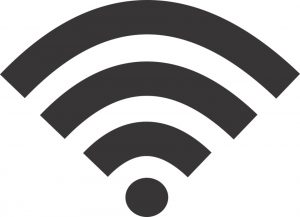
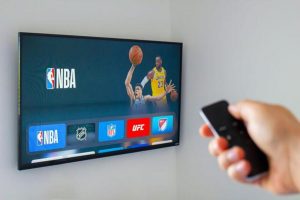

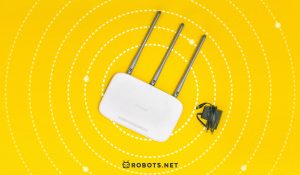
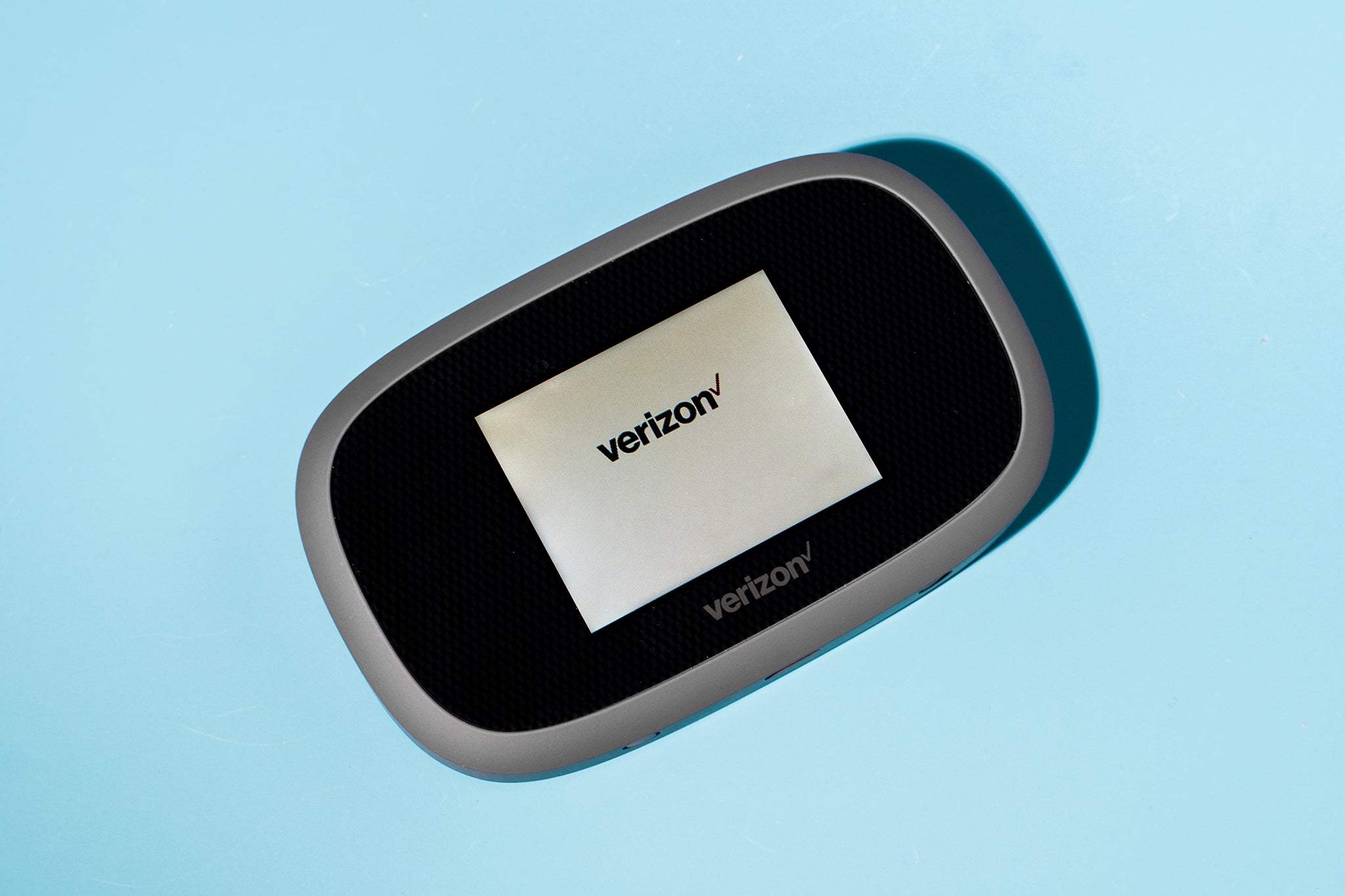
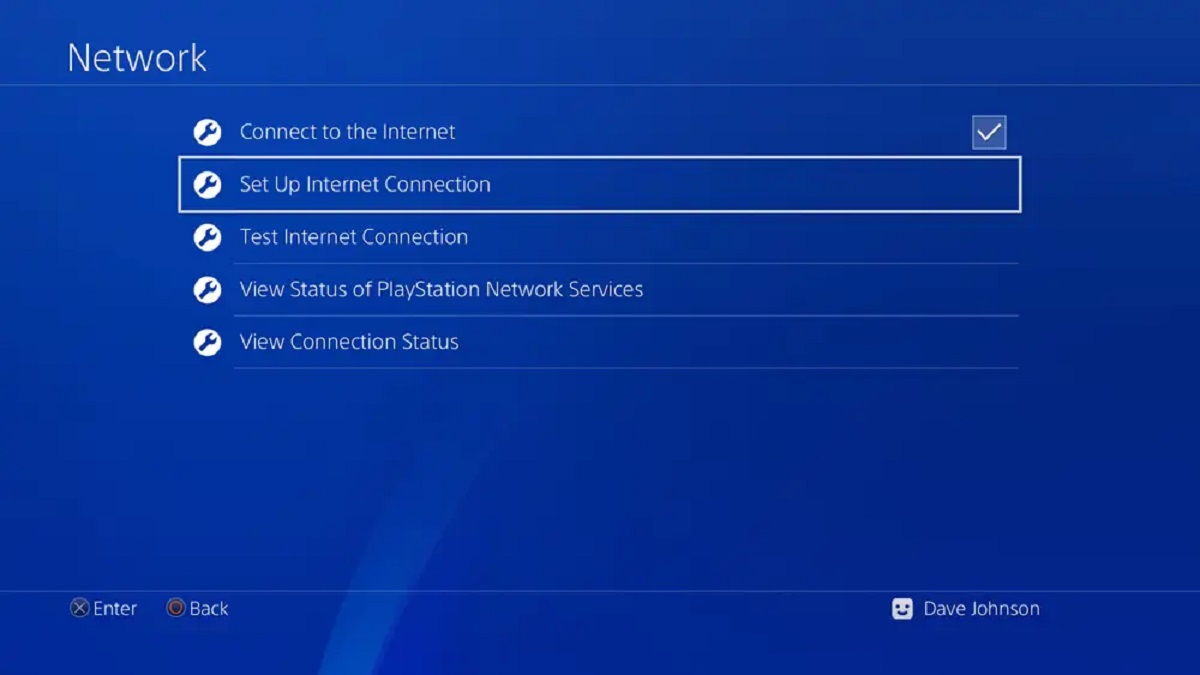

![How To Increase Your Internet Speed Right Now [GUIDE]](https://robots.net/wp-content/uploads/2022/04/how-to-increase-your-internet-speed-featured-300x175.jpg)








